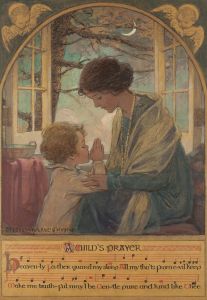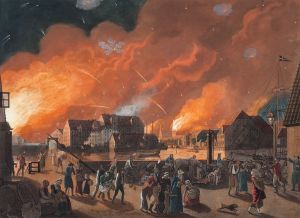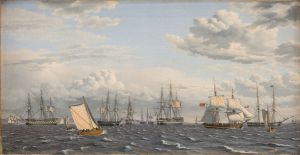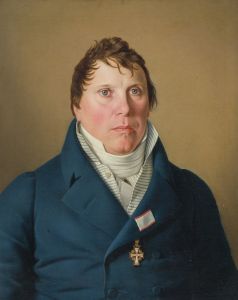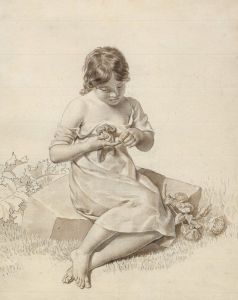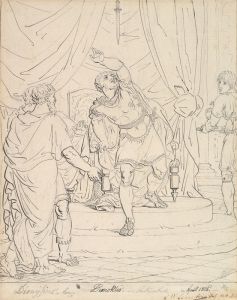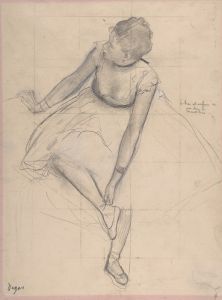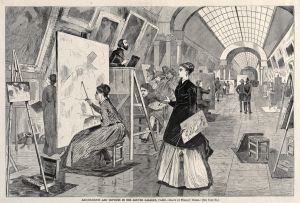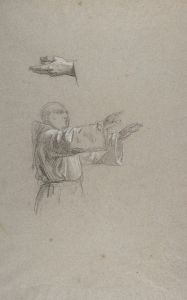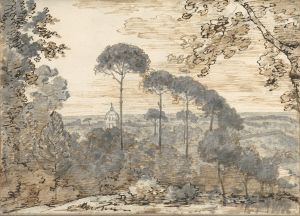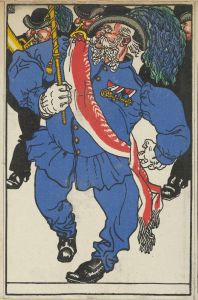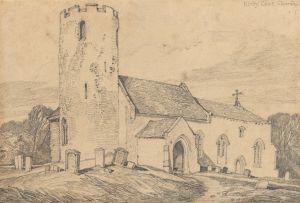
Ved kirken Saint-Martin i Montmorency, nord for Paris, 10 juli 1812
A hand-painted replica of Christoffer Wilhelm Eckersberg’s masterpiece Ved kirken Saint-Martin i Montmorency, nord for Paris, 10 juli 1812, meticulously crafted by professional artists to capture the true essence of the original. Each piece is created with museum-quality canvas and rare mineral pigments, carefully painted by experienced artists with delicate brushstrokes and rich, layered colors to perfectly recreate the texture of the original artwork. Unlike machine-printed reproductions, this hand-painted version brings the painting to life, infused with the artist’s emotions and skill in every stroke. Whether for personal collection or home decoration, it instantly elevates the artistic atmosphere of any space.
Christoffer Wilhelm Eckersberg, often referred to as the father of Danish painting, created the artwork "Ved kirken Saint-Martin i Montmorency, nord for Paris, 10 juli 1812" during his stay in France. Eckersberg was a prominent figure in the Danish Golden Age of painting, and his works are celebrated for their clarity, precision, and attention to detail. This particular painting is a testament to his skill in capturing architectural and natural elements with a sense of realism and tranquility.
Eckersberg traveled to Paris in 1810 to further his artistic education and was influenced by the neoclassical style that was prevalent in the city at the time. His time in Paris was marked by his studies under the tutelage of Jacques-Louis David, a leading neoclassical painter. This period was crucial in shaping Eckersberg's artistic style, which combined the neoclassical emphasis on form and structure with a keen observation of nature.
The painting "Ved kirken Saint-Martin i Montmorency, nord for Paris, 10 juli 1812" depicts the Church of Saint-Martin located in Montmorency, a commune in the northern suburbs of Paris. The choice of this location reflects Eckersberg's interest in capturing the serene and picturesque landscapes of the French countryside, as well as his fascination with historical and architectural subjects.
In the painting, Eckersberg employs a meticulous approach to detail, characteristic of his work. The church is rendered with precise lines and a clear depiction of its architectural features, showcasing his ability to portray buildings with a sense of solidity and presence. The surrounding landscape is depicted with equal care, highlighting the lush greenery and the tranquil atmosphere of the area. The composition is balanced, with the church positioned slightly off-center, allowing the viewer's eye to wander through the scene and appreciate the harmonious relationship between the man-made structure and its natural surroundings.
Eckersberg's use of light in this painting is particularly noteworthy. The play of light and shadow adds depth and dimension to the scene, enhancing the realism and inviting the viewer to experience the quiet beauty of the moment captured on canvas. The soft, natural lighting suggests a peaceful summer day, contributing to the overall sense of calm and serenity that pervades the work.
This painting is an excellent example of Eckersberg's ability to blend the neoclassical style with his own observations of the world around him. It reflects his dedication to capturing the essence of a place and moment in time, a quality that would influence many Danish artists who followed in his footsteps. Eckersberg's work laid the foundation for the development of Danish painting in the 19th century, and his influence can be seen in the works of later artists such as Vilhelm Hammershøi and Peder Severin Krøyer.
"Ved kirken Saint-Martin i Montmorency, nord for Paris, 10 juli 1812" remains a significant piece within Eckersberg's oeuvre, illustrating his mastery of landscape and architectural painting. It continues to be appreciated for its technical skill and the serene beauty it conveys, offering a glimpse into the artistic journey of one of Denmark's most celebrated painters.





